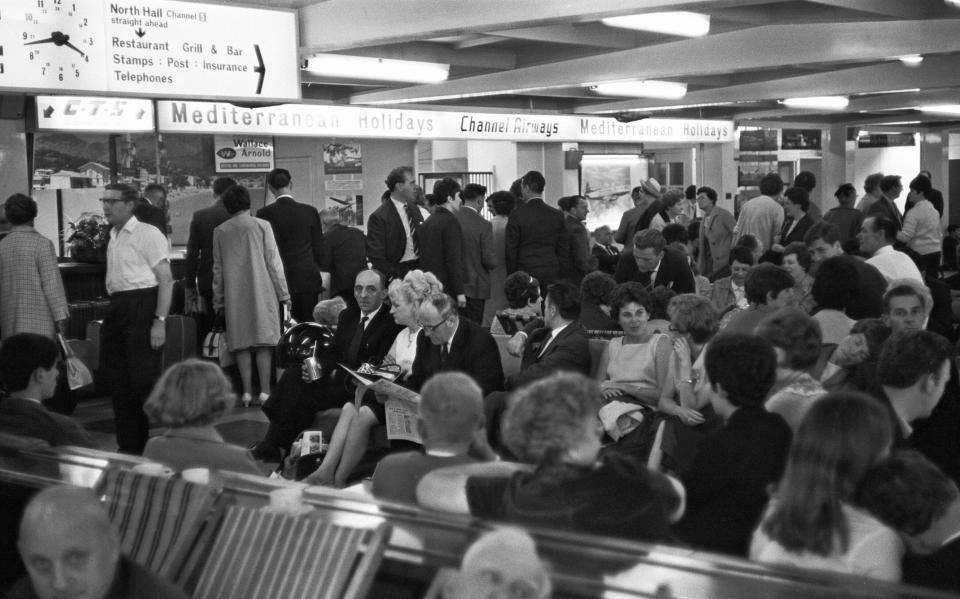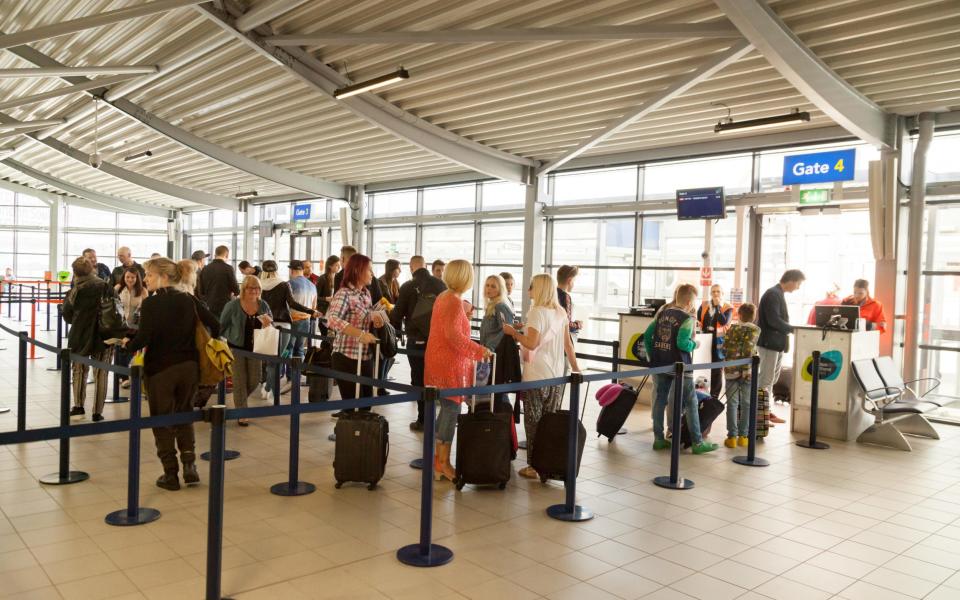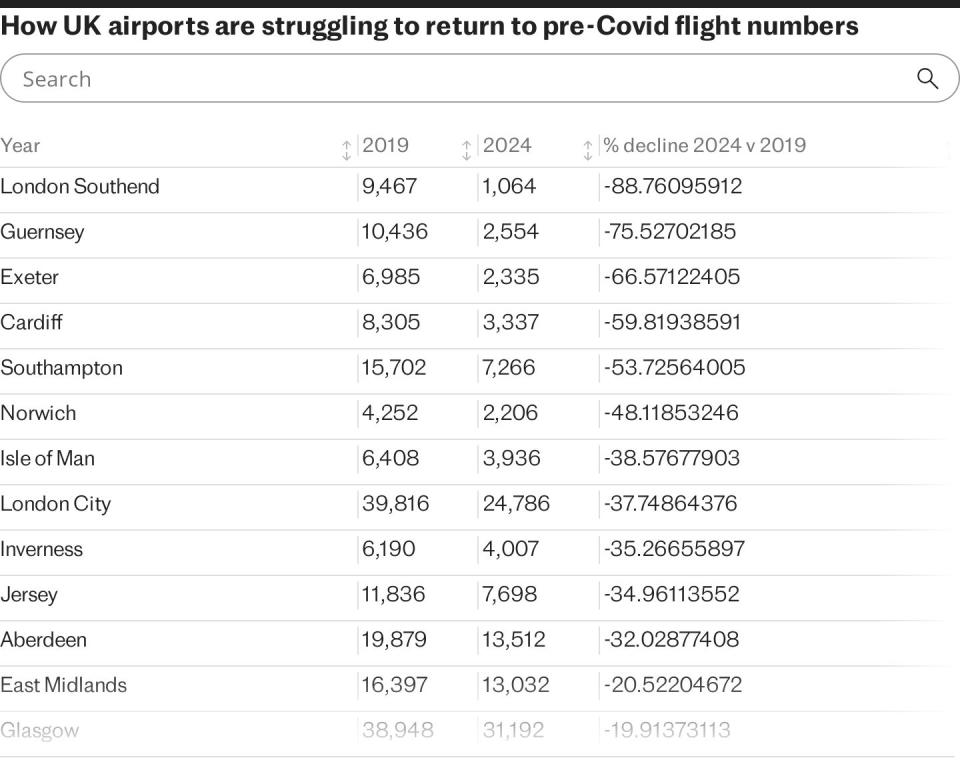How Southend Airport wants to bring back the glory days

Five years ago, Telegraph Travel reported on London Southend’s “remarkable renaissance”. Two million passengers departed the Essex airport in 2019 on 9,467 flights, a year-on-year increase of around 30 per cent.
“Southend is the fastest growing airport in the country – and this week rolled out the red carpet for its newest airline: the low-cost behemoth that is Ryanair,” we wrote. Routes at the time included Prague, Barcelona, Bergamo, Bilbao and Alicante. It seemed the only way was up.
Since then, however, things have gone rather awry. Ryanair left in 2021, as pandemic-era rules around air travel took their toll, and four of the five routes listed above are no more. Only 475 departures were recorded in 2023 – a 95 per cent fall on the 2019 figure. As I write this, London Southend’s daily departures board shows just two flights: EasyJet Flight 7858 to Amsterdam, and EasyJet Flight 7989 to Alicante (delayed by 45 minutes). Southend has gone from being Britain’s fastest growing airport to its most rapidly spiralling.
But a glimmer of hope has emerged. The airport’s owner, Esken (formerly the Stobart Group) has reportedly agreed a deal to hand control over to Carlyle, the US private-equity firm to which it is £193.75 million in debt. The deal includes £32 million of new funding to help secure the airport’s future. And as the news was breaking, EasyJet announced extra summer services from Southend to Palma de Mallorca, Paris and Faro, the gateway to the Algarve. Perhaps the glory days could be returning for London’s smallest airport.
🗞✈️ Let the good news keep on comin'! Extra flights to Paris and Palma this summer, courtesy of @easyJet.
Read more in @Essex_Echo below 👇
🔗 https://t.co/psWqwzgqql#FlyLondonSouthend— London Southend Airport (@SouthendAirport) March 4, 2024
A chequered history
Older readers might recall that Southend, during the Sixties, was actually Britain’s third busiest hub, behind only Heathrow and Manchester.
During that heyday it handled nearly 700,000 passengers a year with services to destinations including Paris, Ostend, Rotterdam and the Channel Islands. British United Air Ferries, which specialised in cross-Channel flights carrying cars and their owners, became synonymous with Southend. But competition from standard cross-Channel ferry services and the growth of Stansted and Luton airports ushered in its rapid decline.


The seeds of its revival were sown in 2008, when it was bought for £21 million by the Stobart Group, which then spent more than £100 million regenerating it. EasyJet began services from Southend in 2012; Flybe joined soon after. The arrival of Ryanair in 2019 seemed certain to cement its place as a modestly successful yet unheralded alternative for those living in London and Essex.
It was also, at the time, winning the praise of passengers tired of the experience at the capital’s more crowded hubs. The readers of consumer magazine Which? rated Southend London’s best airport for four consecutive years, and in its 2018 poll – which examined eight categories including baggage reclaim, seating, toilets, queues at security and passport control – it achieved an overall score of 84 per cent, putting it behind only Doncaster-Sheffield among all Britain’s airports. Bigger isn’t necessarily better.
Then came Covid. The pandemic made many people reluctant to travel, two years of ever-changing rules hindered those who did want to get away, and financial support from the Government was often labelled insufficient. Then, just as holidays were returning to normal, rising energy costs began forcing both businesses and millions of Britons to tighten their belts.
The British airports on the brink
Southend is far from the only UK airport battling to get back to its best. Data from aviation analysts OAG shows that only three of Britain’s airports have reached their pre-Covid heights. Southend’s 1,064 scheduled departures in 2024 – though a number of flights may still be added – represents a fall of almost 89 per cent.

Southampton is another airport facing an uncertain future. It welcomed a record 2.1 million passengers on 19,988 departures in 2017. This year only 7,266 departures are scheduled (down 53.7 per cent). It was hit hard by the failure of Flybe in March 2020, as well as the collapse of the relaunched Flybe, which had been planning to return to Southampton, in January 2023. It is hoped a runway extension, which was completed last September, allowing larger aircraft to visit, will help it stay profitable.
Then there’s Exeter, another former Flybe hub. It saw 6,985 departures in 2019, but only 2,335 are scheduled for 2024 (down 66.6 per cent). It needed £5 million of taxpayer cash to stay afloat during the pandemic, and continues to lose money.
All will be desperate to avoid the fate of Doncaster-Sheffield, which closed entirely in 2022, despite experiencing its busiest ever year in 2019, when it welcomed 1.4 million passengers on 4,615 departures, to destinations as diverse as Gdansk, Vilnius, Malaga, Amsterdam and Tenerife, and despite its popularity with fliers (as per the Which? surveys).
Will London Southend bring back the glory days?
So what is London Southend’s ceiling? Can it hit two million annual passengers again? The airport is certainly bullish about the future. A spokesperson said: “In terms of our near-term growth plans, we’re aiming to beat our previous high of two million passengers (from 2019) in the next two to three years. By 2030, we’re projecting to be serving more than five million passengers per year.”
CEO John Upton, in a statement, added: “With a fast-growing population of approaching eight million within an hour [of the airport], and with other London airports facing a capacity cliff-edge, we are ideally placed to serve those airlines looking to grow their operations in the London market. We are also already seeing our passenger volumes double year-on-year with EasyJet again announcing more route capacity.”

An aviation expert expressed doubt that reality will match these lofty ambitions, however. OAG’s John Grant said: “[The deal with Carlyle] finally gives a clarity of ownership and subsequent direction, and London could certainly do with the extra capacity. But can they ever achieve the passenger numbers seen previously? Probably not – those volumes were achieved at giveaway rates and losses. Realistically, they are perhaps an 800,000 annual passenger-type facility.”


